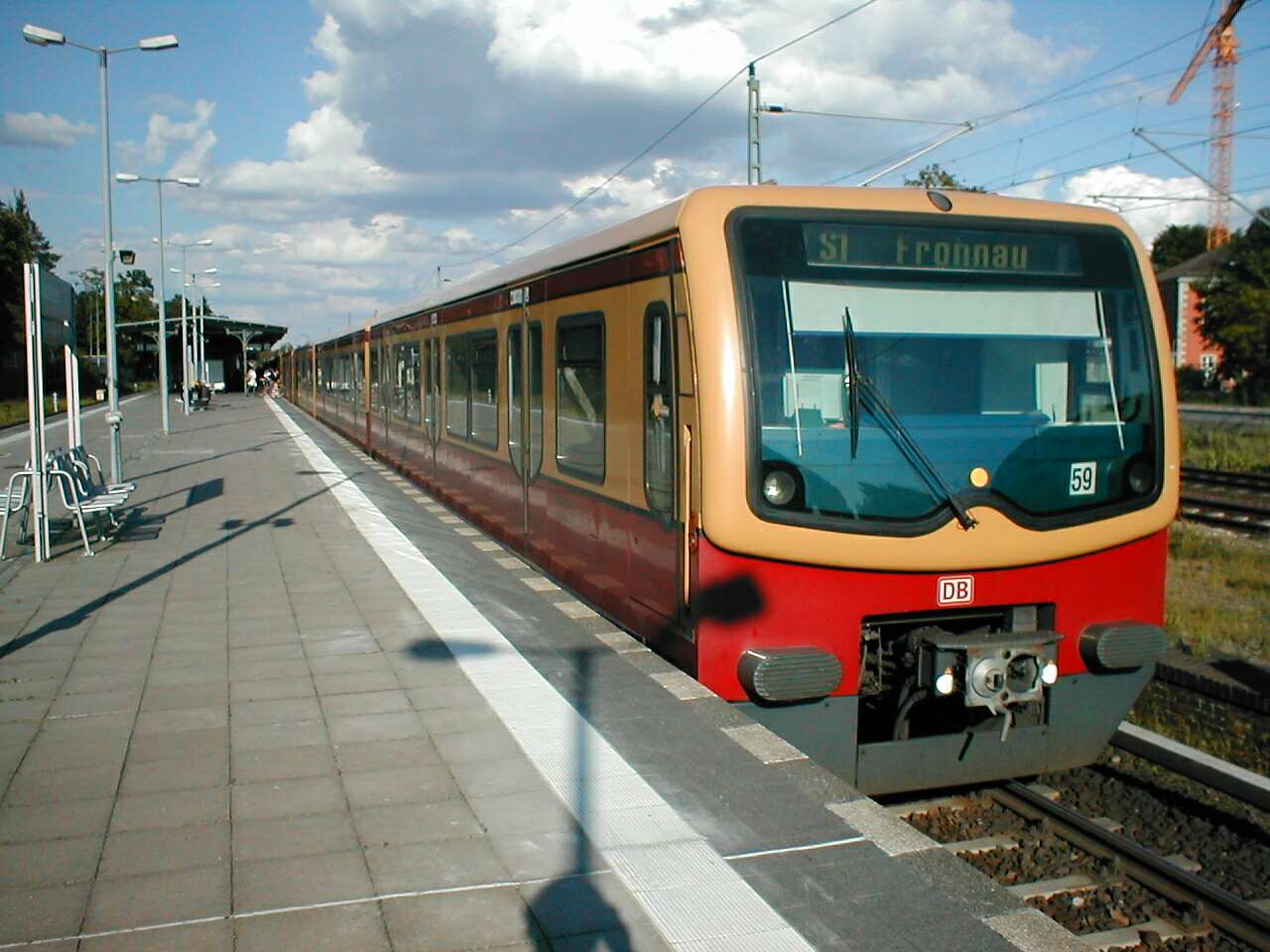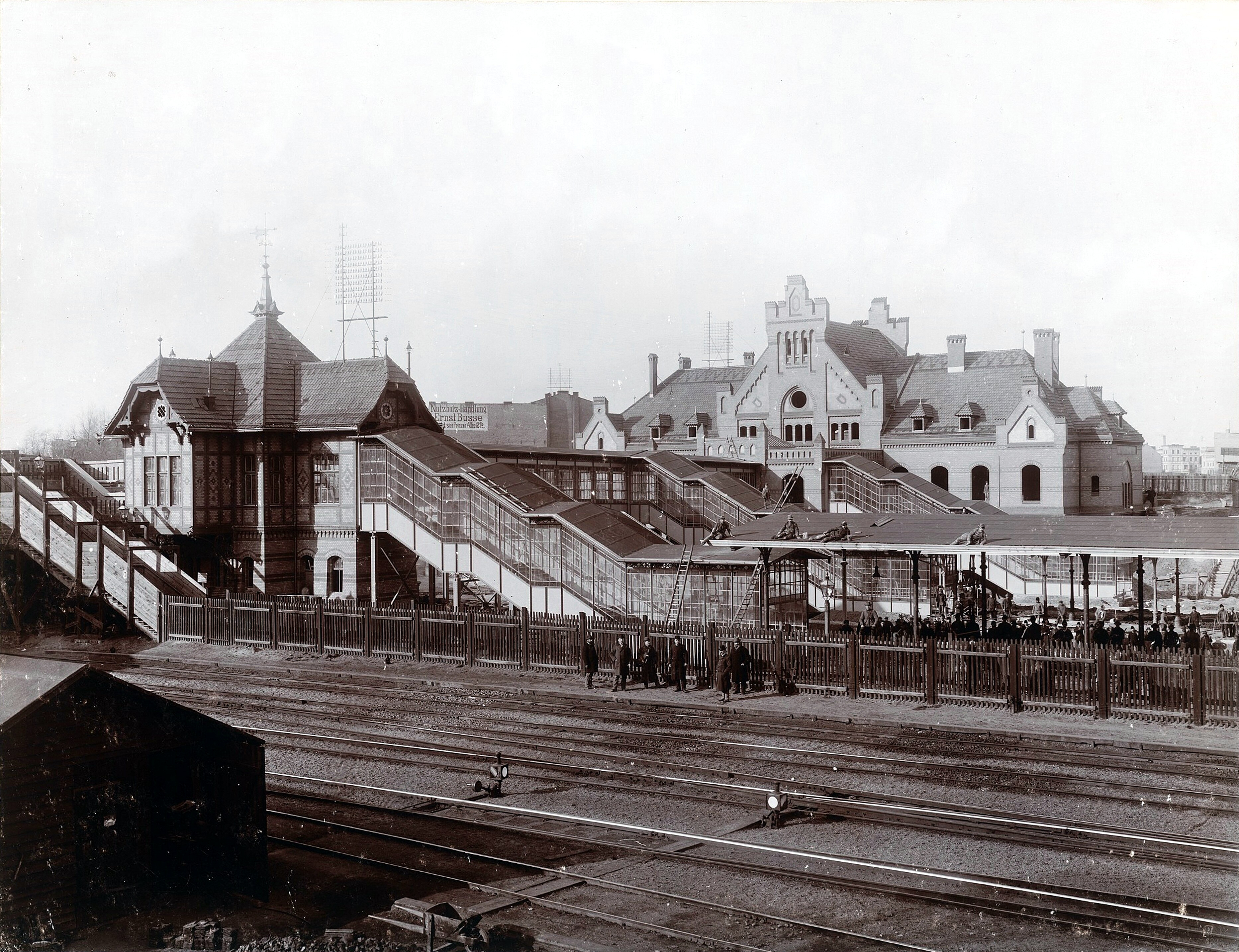|
Voltastraße (Berlin U-Bahn)
Voltastraße is a Berlin U-Bahn station located on the . Built in 1914 but not opened until 1930 (a delay caused by the First World War), it has granite columns and is below the street.J. Meyer-Kronthaler, ''Berlins U-Bahnhöfe'', Berlin: be.bra, 1996 After the completion of the Berlin Wall The Berlin Wall (, ) was a guarded concrete Separation barrier, barrier that encircled West Berlin from 1961 to 1989, separating it from East Berlin and the East Germany, German Democratic Republic (GDR; East Germany). Construction of the B ..., line U8 was severely curtailed. In the north, only Voltastraße and Gesundbrunnen stations could be used by West Berliners. Thereafter U8 became a tiny line of two stations that was little used, a condition that lasted until 5 October 1977 when it was extended to Osloer Straße to interchange with line U9. References {{DEFAULTSORT:Voltastrasse (Berlin U-Bahn) U8 (Berlin U-Bahn) stations Buildings and structures in Mitte Railway ... [...More Info...] [...Related Items...] OR: [Wikipedia] [Google] [Baidu] |
U-Bahn Berlin Voltastraße
Rapid transit in Germany consists of four systems and 14 systems. The , commonly understood to stand for ('underground railway'), are conventional rapid transit systems that run mostly underground, while the or ('city rapid railway') are commuter rail services, that may run underground in the city center and have metro-like characteristics in Munich, Hamburg and Berlin which they only have to a lesser extent in other cities. There are also over a dozen semi-metro or systems that are rapid transit in the city center and light rail outside. There are four systems, namely in Berlin, Hamburg, Munich and Nuremberg; these are all run by the transit authorities in the city. Some cities call their "" (like Frankfurt) or abbreviate their with a U. The confusing term is also used on occasion and as is often seen as the more desirable term, common parlance and non-specialist media are often not very rigorous with the definition of their terms. Additionally, several cities in th ... [...More Info...] [...Related Items...] OR: [Wikipedia] [Google] [Baidu] |
Berlin U-Bahn
The Berlin U-Bahn (; short for , "underground railway") is a rapid transit system in Berlin, the capital and largest city of Germany, and a major part of the city's public transport system. Together with the Berlin S-Bahn, S-Bahn, a network of suburban train lines, and a Trams in Berlin, tram network that operates mostly in the eastern parts of the city, it serves as the main means of transport in the capital. Opened in 1902, the serves List of Berlin U-Bahn stations, 175 stations spread across nine lines, with a total track length of , about 80% of which is underground. Trains run every two to five minutes during peak hours, every five minutes for the rest of the day and every ten minutes in the evening. Over the course of a year, U-Bahn trains travel , and carry over 400 million passengers. In 2017, 553.1 million passengers rode the U-Bahn. The entire system is maintained and operated by the , commonly known as the BVG. Designed to alleviate traffic flowing into and out of c ... [...More Info...] [...Related Items...] OR: [Wikipedia] [Google] [Baidu] |
List Of Berlin U-Bahn Stations
This is an alphabetical list of Berlin U-Bahn stations. Currently, there are 175 active stations. A B C D E F G H I J K L M N O P R S T U V W Y Z References {{Public transport in Berlin Berlin U-Bahn stations, Berlin-related lists, Railway stations (U-Bahn) Lists of metro stations, Berlin U-Bahn stations, List of Lists of railway stations in Germany, Berlin ... [...More Info...] [...Related Items...] OR: [Wikipedia] [Google] [Baidu] |
First World War
World War I or the First World War (28 July 1914 – 11 November 1918), also known as the Great War, was a World war, global conflict between two coalitions: the Allies of World War I, Allies (or Entente) and the Central Powers. Fighting took place mainly in European theatre of World War I, Europe and the Middle Eastern theatre of World War I, Middle East, as well as in parts of African theatre of World War I, Africa and the Asian and Pacific theatre of World War I, Asia-Pacific, and in Europe was characterised by trench warfare; the widespread use of Artillery of World War I, artillery, machine guns, and Chemical weapons in World War I, chemical weapons (gas); and the introductions of Tanks in World War I, tanks and Aviation in World War I, aircraft. World War I was one of the List of wars by death toll, deadliest conflicts in history, resulting in an estimated World War I casualties, 10 million military dead and more than 20 million wounded, plus some 10 million civilian de ... [...More Info...] [...Related Items...] OR: [Wikipedia] [Google] [Baidu] |
Berlin Wall
The Berlin Wall (, ) was a guarded concrete Separation barrier, barrier that encircled West Berlin from 1961 to 1989, separating it from East Berlin and the East Germany, German Democratic Republic (GDR; East Germany). Construction of the Berlin Wall was commenced by the government of the GDR on 13 August 1961. It included guard towers placed along large concrete walls, accompanied by a wide area (later known as the "death strip") that contained anti-vehicle trenches, beds of nails and other defenses. The primary intention for the Wall's construction was to prevent East Germany, East German citizens from Emigration from the Eastern Bloc, fleeing to the West. The Eastern Bloc, Soviet Bloc propaganda portrayed the Wall as protecting its population from "Fascist (insult), fascist elements conspiring to prevent the will of the people" from building a Communism, communist state in the GDR. The authorities officially referred to the Berlin Wall as the ''Anti-Fascist Protection Ram ... [...More Info...] [...Related Items...] OR: [Wikipedia] [Google] [Baidu] |
Berlin-Gesundbrunnen Station
Berlin Gesundbrunnen station () is a railway station in Berlin, Germany. It is situated in the Gesundbrunnen (Berlin), Gesundbrunnen district, part of the central Mitte borough, as an interconnection point between the northern ''Berlin Ringbahn, Ringbahn'' and ''Berlin Nord-Süd Tunnel, Nord-Süd Tunnel'' lines of the Berlin S-Bahn, as well as a regional and long distance station of the Deutsche Bahn network. The station is operated by the DB Station&Service subsidiary of Deutsche Bahn AG and is classified as a German railway station categories, Category 1 station, one of 21 in Germany and four in Berlin, the others being Berlin Hauptbahnhof, Berlin Südkreuz and Berlin Ostbahnhof. History When the Berlin–Szczecin railway, Berlin–Stettin railway was opened in 1842, the tracks ran farther northwestwards with a hazardous level crossing on Badstraße. Nearby Gesundbrunnen station was inaugurated on 1 January 1872 with the northern ''Ringbahn'' line; it became an important railw ... [...More Info...] [...Related Items...] OR: [Wikipedia] [Google] [Baidu] |
Osloer Straße (Berlin U-Bahn)
Osloer Straße is a Berlin U-Bahn station in the Gesundbrunnen (former Wedding) district, located on the and . Like the eponymous street it is named after the City of Oslo. The two-level station opened on 30 April 1976 (U9) and 5 October 1977 (U8). Since 1995 it has also been served by the ''M13'' line and line 50 of the Berlin Straßenbahn The Berlin tramway () is the main tram system in Berlin, Germany. It is one of the oldest tram networks in the world, dating back to 1865 and is operated by (BVG), which was founded in 1929. It is notable for being the third-largest tram s .... The architect was R. G. Rümmler.J. Meyer-Kronthaler, ''Berlins U-Bahnhöfe'', Berlin: be.bra, 1996 The station have had also a direct connection to Tegel Airport with the bus 128. References U8 (Berlin U-Bahn) stations U9 (Berlin U-Bahn) stations Buildings and structures in Mitte Railway stations in Germany opened in 1976 {{Berlin-railstation-stub ... [...More Info...] [...Related Items...] OR: [Wikipedia] [Google] [Baidu] |
U9 (Berlin U-Bahn)
U9 is a line on the Berlin U-Bahn. The line was opened on 28 August 1961 as Line G. Route The path of the U9 is completely underground. It starts in the north at Osloer Straße in Gesundbrunnen and runs through Wedding before passing under the Berlin Ringbahn and running through Moabit, reaching Hansaplatz and Tiergarten before crossing the Berlin Stadtbahn at the Zoo and Kurfürstendamm, eventually leaving western central Berlin by heading to Friedenau and finally Steglitz at Rathaus Steglitz. History First stage of construction After the division of Berlin in 1948, the citizens of West Berlin preferred buses and trams that bypassed East Berlin. Furthermore, the highly populated boroughs of Steglitz, Wedding and Reinickendorf were in need of rapid transit access to the new center of West Berlin south of the Zoo. This prompted the construction of a completely new line, then called line G, becoming the third north–south line after line C (modern U6) and line D (modern U8). G ... [...More Info...] [...Related Items...] OR: [Wikipedia] [Google] [Baidu] |
U8 (Berlin U-Bahn) Stations
U8 may refer to: * U8 (Berlin U-Bahn), a line on the Berlin U-Bahn * U8 Global Student Partnership for Development * German submarine ''U-8'', one of several German submarines * Yangwang U8, a luxury SUV by BYD Auto * the IATA code for Armavia airline * another designation for the Beechcraft L-23 Seminole * '' Ultima VIII: Pagan'', a video game * u8, a name for the 8-bit unsigned integer, especially in Rust Rust is an iron oxide, a usually reddish-brown oxide formed by the reaction of iron and oxygen in the catalytic presence of water or air moisture. Rust consists of hydrous iron(III) oxides (Fe2O3·nH2O) and iron(III) oxide-hydroxide (FeO(OH) ... See also * 8U (other) {{Letter-NumberCombDisambig ... [...More Info...] [...Related Items...] OR: [Wikipedia] [Google] [Baidu] |
Buildings And Structures In Mitte
A building or edifice is an enclosed structure with a roof, walls and windows, usually standing permanently in one place, such as a house or factory. Buildings come in a variety of sizes, shapes, and functions, and have been adapted throughout history for numerous factors, from building materials available, to weather conditions, land prices, ground conditions, specific uses, prestige, and aesthetic reasons. To better understand the concept, see ''Nonbuilding structure'' for contrast. Buildings serve several societal needs – occupancy, primarily as shelter from weather, security, living space, privacy, to store belongings, and to comfortably live and work. A building as a shelter represents a physical separation of the human habitat (a place of comfort and safety) from the ''outside'' (a place that may be harsh and harmful at times). buildings have been objects or canvasses of much artistic expression. In recent years, interest in sustainable planning and building pract ... [...More Info...] [...Related Items...] OR: [Wikipedia] [Google] [Baidu] |




